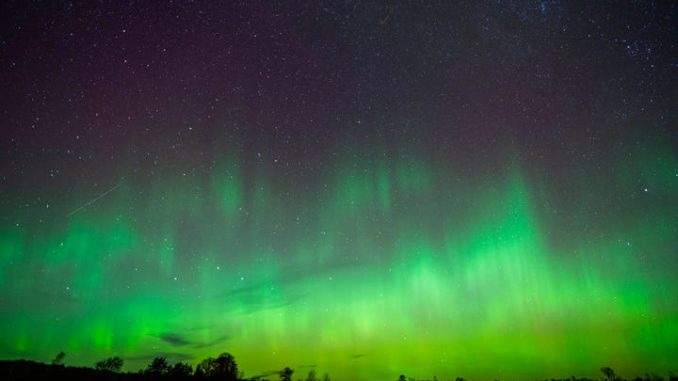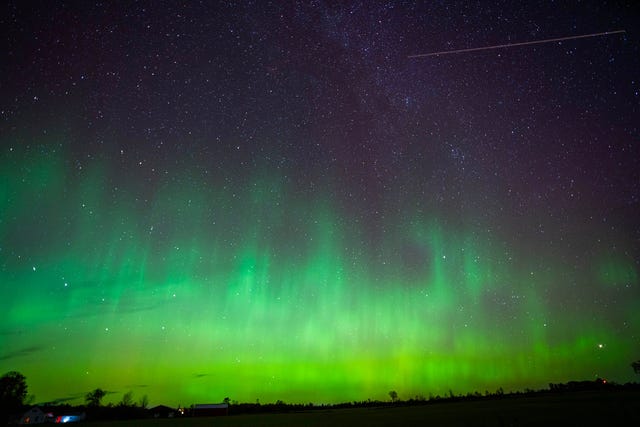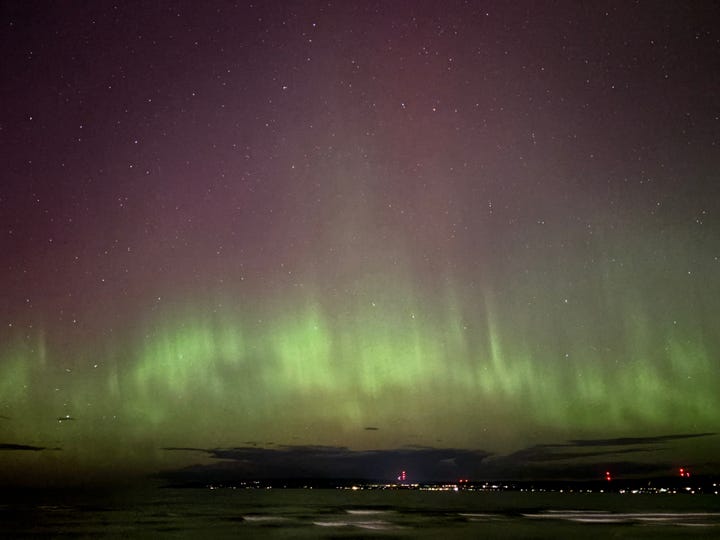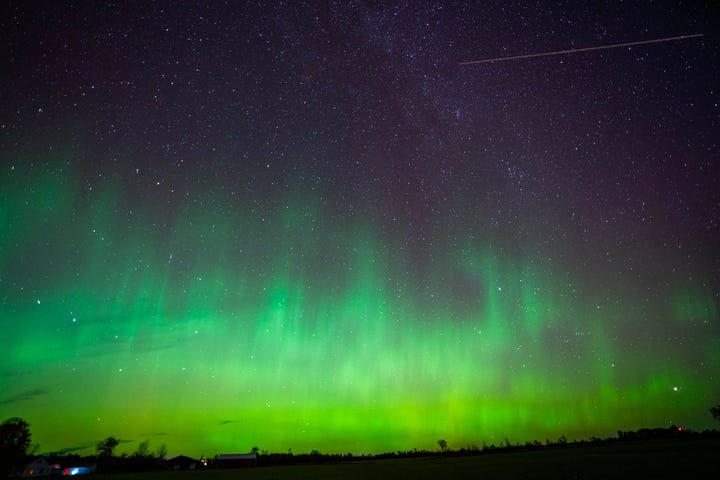
Aurora Alert: Northern Lights to dazzle us again tonight, Incoming solar storm to unleash auroras; Aurora Borealis Expected To Be Seen In 8 States Tonight
In the United States, plenty of Americans should have an opportunity Thursday to witness auroras dancing across the night sky amid an impending solar storm.
Another powerful solar eruption is hurtling across the cosmos toward Earth, bearing with it the potential to create striking auroras in the night sky around the planet.

In the United States, plenty of Americans should have an opportunity Thursday night to witness the dazzling display of green and red hues also known as the aurora borealis, thanks to the “severe” geomagnetic storm forecasted by the National Oceanic and Atmospheric Administration. A coronal mass ejection of plasma clouds and charged particles driving the storm prompted NOAA’s Space Prediction Center to issue a rare G4 geomagnetic storm watch for the second time this year.
Despite the threat the solar storm poses to satellites, GPS signals and power grids, the storm watch is good news for aurora chasers: Because of the way the solar particles interact with Earth’s magnetosphere, the powerful eruption should make the vibrant northern lights visible to a wider swath of the northern hemisphere than usual.
Forecasters use a five-level scale to measure geometric storms, which are caused when coronal mass ejections release solar particles and electromagnetic radiation toward our planet. At a G4, this one is just a single level away from being the most severe solar storm possible, according to NOAA.

Storm watches at the G4 level don’t come along very often: The last one issued by NOAA in May was the first since 2005.
The May geomagnetic storm was a record-setting whopper, powerful enough to cause power grid irregularities and interference with GPS signals – even farming equipment. On the bright side, it did also unleash spectacular views of the northern lights in parts of the country where auroras are not often visible.
Where will the auroras be visible?
While the northern lights are famously best scene at the poles of the planet, powerful geomagnetic storms can reveal them to wider swaths of the globe.
Thursday’s incoming geomagnetic storm has a Kp index 8, meaning the auroras will move even further towards the equator and become very bright and very active, according to NOAA.
“These are the events that create the best aurora and the extended auroral oval will be observable by the most people, the agency explains. “At these levels, aurora may be seen directly overhead from the northern states.”
The northern lights just might be visible over much of the northern half of the United States, and perhaps as far south as Alabama to northern California, according to SWPC’s experimental Aurora viewline. The visibility for viewing will also depend on local weather conditions and city lights.

States best positioned within the aurora viewing line include:
Alaska
Washington
Idaho
Montana
North Dakota
Minnesota
Michigan
Wisconsin
The auroras may also be “highly active” in parts of Nevada, Oklahoma, Arkansas and North Carolina, according to the University of Alaska at Fairbanks, Geophysical Institute website, which tracks the phenomenon,
When is the best time to see northern lights?
The upcoming solar storm will have particles flowing from the sun that get caught up in Earth’s magnetic field, causing colorful auroras to form as they interact with molecules of atmospheric gases. The resulting glowing green and reddish colors of the aurora may be quite a sight to see – if you look up at the right time.
As auroras form, Earth’s magnetic field redirects the particles toward the poles through a process that produces a stunning display of rays, spirals and flickers that has fascinated humans for millennia.
If the weather is clear, the best aurora is usually visible within an hour or two of midnight, according to NOAA.
The agency maintains an aurora dashboard that should help skygazers track the phenomenon.
Why solar activity is creating more auroras
Fortunately for aurora chasers, there will be far more opportunities to catch the northern lights soon.

Electromagnetic activity is increasing as the sun continues to reach the height of its 11-year solar cycle, which NASA said is expected to be in 2025.
As the sun reaches the peak of Solar Cycle 25, sunspots located in regions of intense magnetic activity should increase, according to the National Oceanic and Atmospheric Administration. When that magnetic activity is released, it creates intense bursts of radiation resulting in solar flares hurtling toward Earth at the speed of light.
Some of these flares can be accompanied by coronal mass ejections that emerge from the sun’s outermost atmosphere, the corona.
These ejections can collide with Earth’s magnetosphere, the barrier protecting humanity from the harshest impacts of space weather, to produce geomagnetic storms that unleash spectacular views of the northern lights in parts of the country where auroras are not often visible.
Leave a Reply